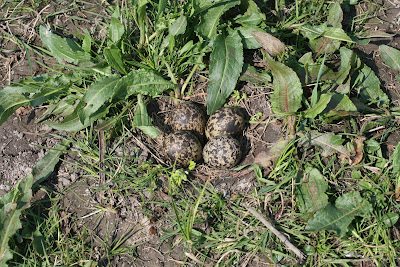Breeding waders generally prefer open fields with clear views and an absence of hedges or stand alone trees or bushes, which can be used as perching posts by avian predators. This is particularly so for Lapwing, whose nests are the most visible.
Lapwing nest © A. Copland
Redshank nest © A. Copland
Chick feeding habitat © K. Finney
In the Callows pair formation starts around the beginning of February for Redshank who are often the first to return from their wintering grounds. Redshank breed for life (determined as 5 years, although they can live longer than this and consequently can have more than one partner over their lifetime). Often birds return to the same area as the previous year’s nest site to meet up and breed. New pair formation is a time consuming and noisy affair for Redshank, males spending much of their time displaying to attract a female. After a successful engagement period of about four weeks a pair bond is formed which will be re-established each year, unless the birds divorce and pair again! Lapwing and Snipe form a new pair bond each year, as do Curlew (although there is evidence to suggest that some Curlew re-establish bonds over successive years). Late February and March is a nosy time at key breeding sites (such as Inishee Island, Co



No comments:
Post a Comment